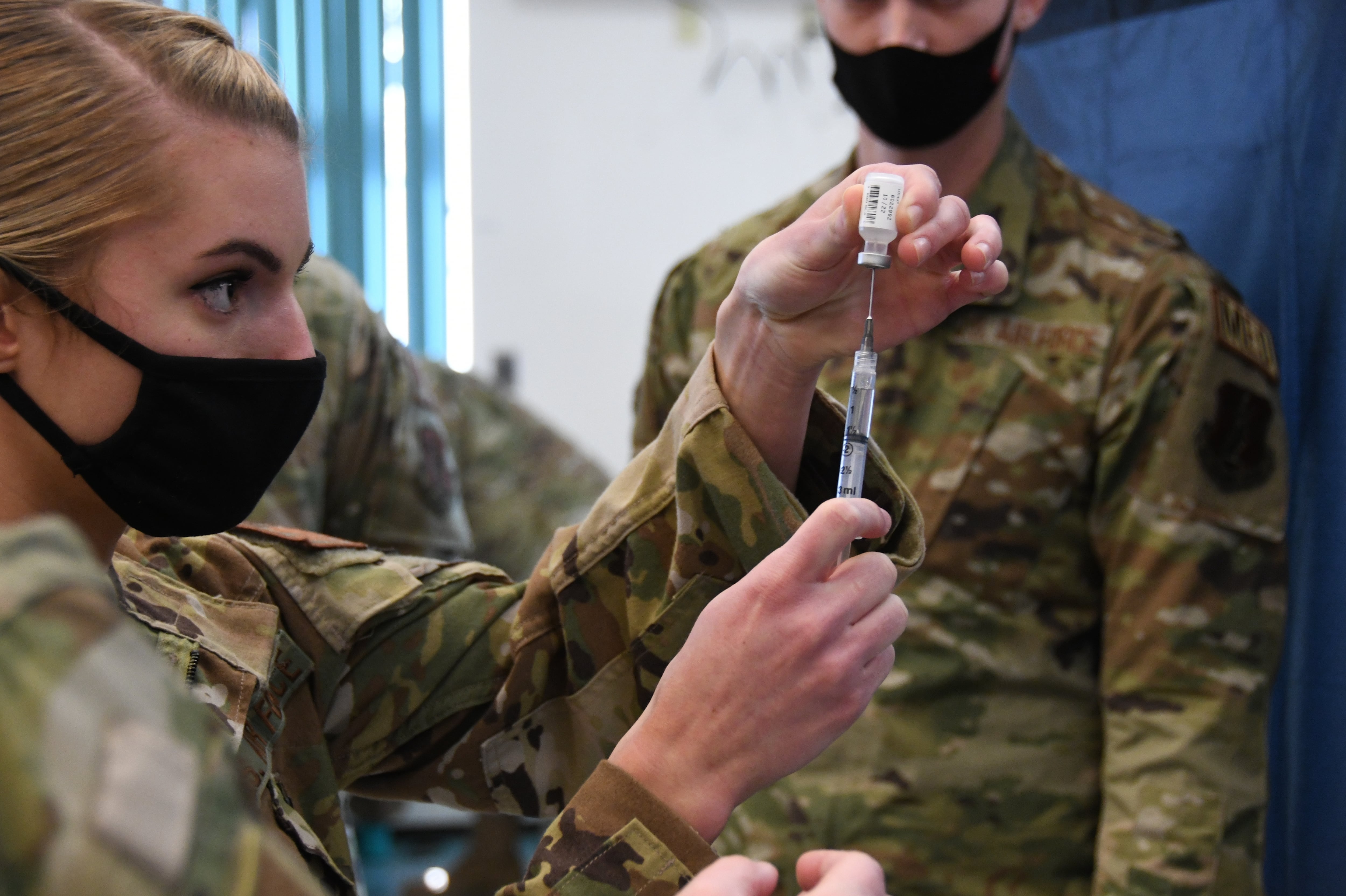Plans for a 4.6% pay raise for troops and a repeal of the military’s COVID-19 vaccine mandate are headed to the White House to become law after the Senate on Thursday advanced the annual defense authorization bill by a comfortable bipartisan margin of 83 to 11.
The legislation — which outlines $817 billion in spending priorities for the Department of Defense in fiscal 2023 — was passed by the House last week and has advanced out of Congress for more than six decades.
But this year’s version came later than usual because of still unresolved issues with congressional appropriations and political wrangling on Capitol Hill.
Whether President Joe Biden will sign the measure into law is still unclear. The White House has objected to the rollback of the coronavirus vaccine mandate in recent days, saying the shots are still needed to ensure military readiness and force health.
RELATED

But the president and senior administration officials have not said whether they would consider a veto over the provision.
Congressional Republicans had threatened to block the authorization bill if a repeal of the vaccine mandate — put in place one year ago — wasn’t included. They have argued that the requirement hurts recruiting and retention, and is unnecessary given the good health and young age of most service members.
“In our country, the number of new service members joining is at a record low,” Sen. Marsha Blackburn, R-Tenn., said at a press conference shortly before passage of the NDAA.
“Every single branch has struggled to meet their recruiting goals. … [The military] has already fired more than 8,400 active-duty service members for not getting the COVID-19 shot.”
Both House and Senate Democrats dropped their objections to the vaccine repeal in order to advance the rest of the authorization bill, viewed as must-pass legislation annually.
It includes a host of specialty pay and bonus renewals, provisions for new program starts, and outlines an array of equipment purchase priorities.
It also has includes an annual military pay raise of 4.6% for 2023, the largest boost troops have seen in the last 20 years.
For junior enlisted troops, the 4.6% hike would mean about $1,300 more next year in take-home pay. For senior enlisted and junior officers, the hike equals about $2,500 more. For an O-4 with 12 years’ service, it’s more than $4,500 in extra pay.
The $817 billion topline for military spending is about $45 billion above what the White House requested in its budget proposal last spring. Both Republicans and Democrats argued that the extra funds are needed to counter rising inflation and ensure force readiness.
Lawmakers approved $800 million for the Ukraine Security Assistance Initiative and granted the Pentagon emergency procurement powers to bolster high-priority munitions production to refill U.S. stockpiles sent to Ukraine.
The bill includes $32.6 billion to increase the U.S. naval fleet, including funds for 11 battle force ships. For the Army, it authorizes funding increases for the CH-47 heavy-lift helicopter, the UH-60 Blackhawk medium-lift helicopter and the MQ-1 Gray Eagle drone.
The final bill includes a requirement for the U.S. Navy to maintain 31 operational amphibious ships, despite opposition from the White House.
And the bill allows the Air Force to begin retiring the A-10 Warthog after previous congressional opposition. The bill also authorizes funding for five more F-35A aircraft as well as F-22 modernization.
RELATED

If the president signs the authorization bill into law, the Defense Department will still need an appropriations bill from Congress to actually receive the funding to carry out the spending priorities.
House and Senate leaders announced earlier this week they have an agreement on the framework for that budget bill, and expect to unveil the details in coming days.
But they have also warned that if an agreement isn’t finalized by early next week, they could opt to simply extend current government funding levels through September 2023 in an effort to prevent a government shutdown.
Such a move would give Pentagon leaders nearly 8% less in available funds than they anticipated for the rest of fiscal 2023, forcing them to make cuts across training and modernization programs.
Reporter Bryant Harris contributed to this story.
Leo covers Congress, Veterans Affairs and the White House for Military Times. He has covered Washington, D.C. since 2004, focusing on military personnel and veterans policies. His work has earned numerous honors, including a 2009 Polk award, a 2010 National Headliner Award, the IAVA Leadership in Journalism award and the VFW News Media award.




